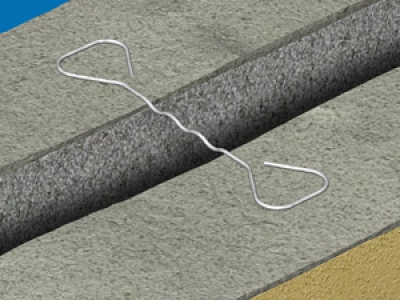A report detailing findings and recommendations along with a quotation for any works will be produced.
A Wall tie inspection checks for the corroded and broken wall ties.
What are wall ties
Wall ties are an essential component of a cavity wall, helping to keep the structure safe and stable. Although cavity walls have been constructed for centuries, the use of metal ties to connect the two skins only emerged in the second half of the 19th century, and has been a standard bricklaying practice in the UK since the early-20th century.
Wall ties are strips or bars, made of metal that span the cavity and tie the internal and external walls of bricks or blockwork together. The ends of the tie are designed to lock tightly into the mortar. The ties are also designed to prevent water transfer from the outer to the inner leaf of the wall, this often takes the form of a twist in the tie or, if a wire tie, corrugations formed in the wire.

